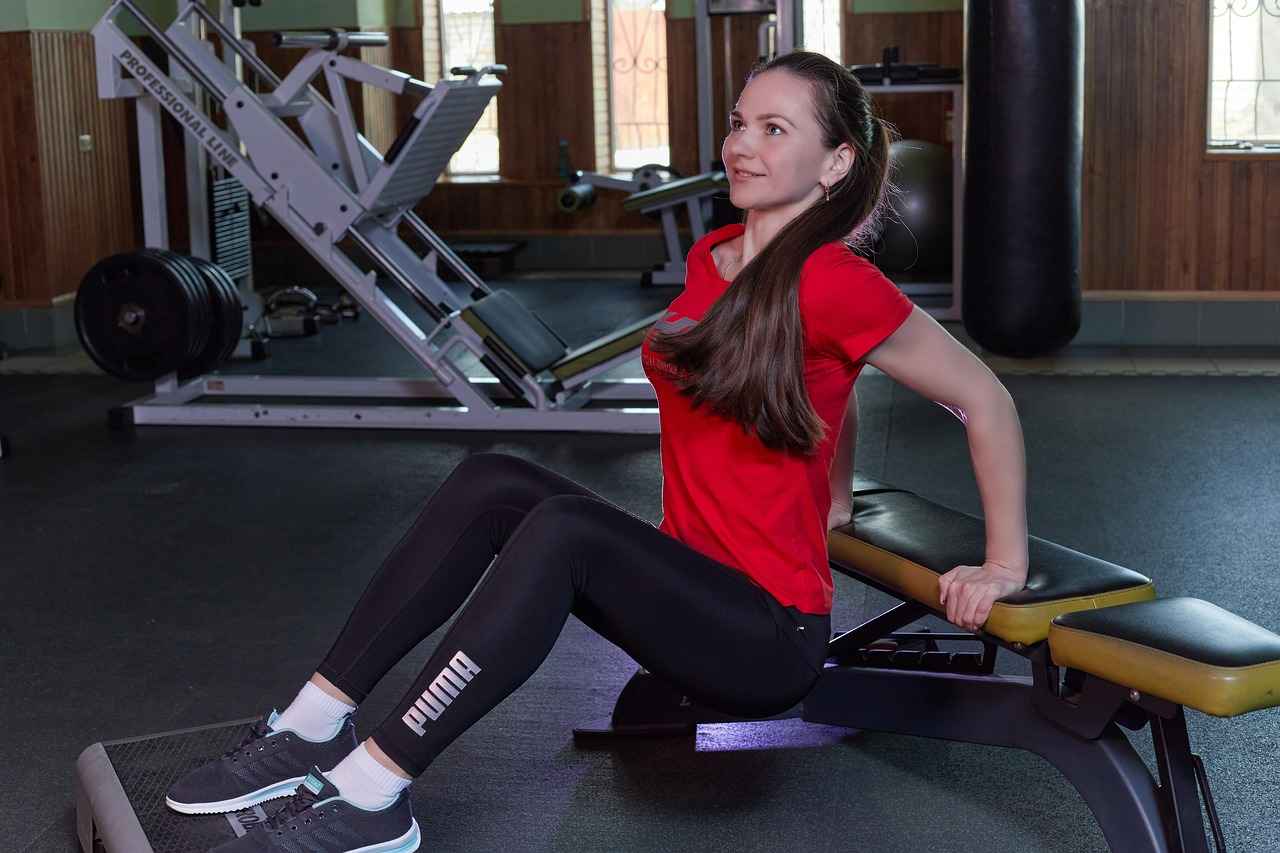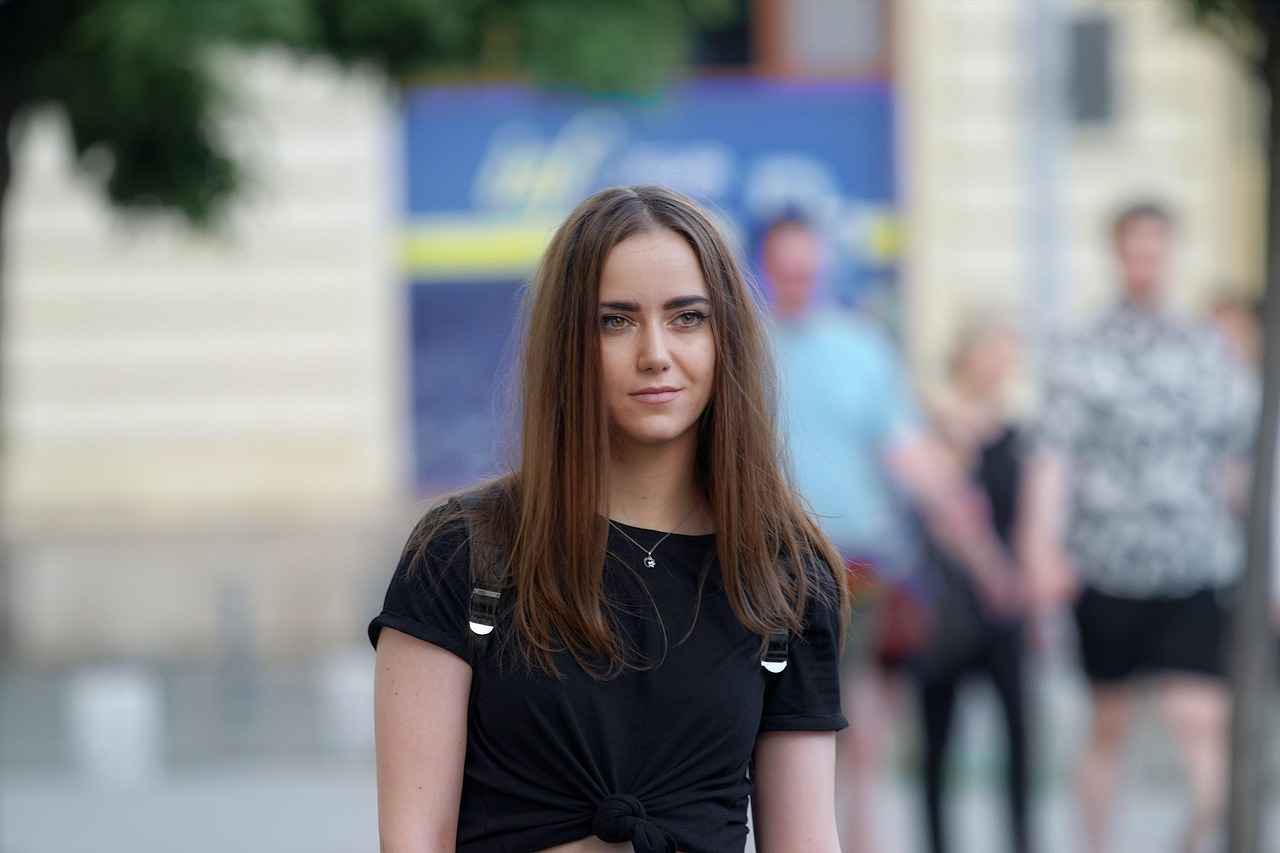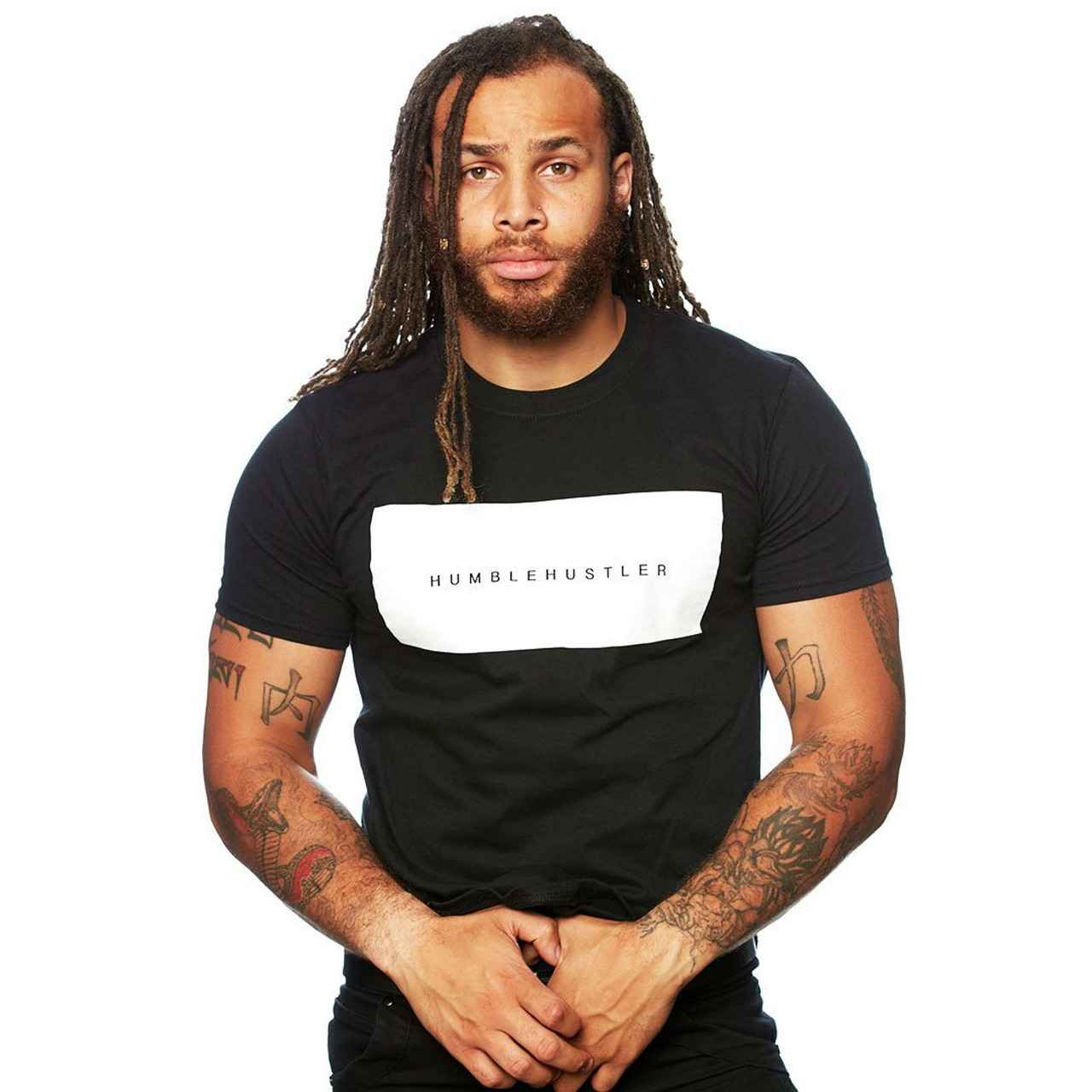This article provides a comprehensive guide on creating custom t-shirts using your own artwork or photography. It covers everything from design concepts to printing techniques and marketing strategies.
Creating custom t-shirts can be a rewarding venture, whether for personal use, gifts, or starting a small business. This guide will walk you through the essential steps to ensure your designs not only look great but also resonate with your target audience.
- Understanding the Basics of Custom T-Shirt Design: Familiarize yourself with key design principles such as color theory, typography, and layout to craft visually appealing shirts.
- Choosing the Right T-Shirt Material: The fabric you select plays a crucial role in comfort and print quality. Explore options like cotton, polyester, and blends to find the best fit for your design.
- Designing Your Artwork for T-Shirts: Learn how to create eye-catching designs that stand out on fabric. Tips on using design software such as Adobe Illustrator can be invaluable.
- Choosing a Printing Method: Understand the different printing techniques available, including screen printing and direct-to-garment (DTG), and how they affect the final product.
- Marketing Your Custom T-Shirts: Discover effective strategies to promote your designs through social media platforms and online stores.
When designing your t-shirt, remember to create print-ready artwork by ensuring the right resolution, color modes, and file formats. This will guarantee high-quality prints that showcase your designs beautifully.
Once your t-shirts are ready, focus on marketing them effectively. Utilize social media channels like Instagram and Facebook to engage with potential customers and build a brand presence. Setting up an online store through platforms like Shopify or Etsy can also streamline the selling process.
In conclusion, creating custom t-shirts with your own art or photography is an exciting opportunity to express your creativity and potentially generate income. By following the steps outlined in this guide, you can create stunning designs that attract attention and resonate with your audience.

Understanding the Basics of Custom T-Shirt Design
Creating custom t-shirts is an art that combines creativity with technical understanding. To design visually appealing and effective shirts, one must grasp the fundamental principles of design. This includes color theory, typography, and layout.
Color Theory
Color plays a crucial role in the design process. Different colors evoke different emotions and reactions. For instance, red can signify passion or urgency, while blue often conveys calmness and trust. Understanding the color wheel and how to combine colors harmoniously can enhance your designs significantly. Consider the complementary and analogous color schemes when selecting hues for your t-shirts.
Typography
The choice of fonts is equally important in custom t-shirt design. Typography can express the theme or message of your shirt. For example, a bold, sans-serif font may convey modernity, while a script font can add a touch of elegance. Ensure that the text is legible and complements the overall design. Mixing fonts can create interest, but be cautious not to overwhelm the viewer with too many styles.
Layout
A well-planned layout is essential for effective t-shirt design. It involves the arrangement of text, images, and other design elements. Use the rule of thirds to create balance and draw attention to focal points. Consider the placement of your design on the shirt, as different styles (like crew neck or v-neck) may affect how the design is perceived. Always keep the wearer’s perspective in mind.
In conclusion, mastering the basics of custom t-shirt design—color theory, typography, and layout—can significantly enhance the appeal of your shirts. By carefully considering these elements, you can create designs that not only look great but also resonate with your audience.

Choosing the Right T-Shirt Material
Selecting the appropriate fabric for your custom t-shirts is crucial for ensuring both comfort and print quality. The right material not only enhances the feel of the shirt against the skin but also significantly affects how well your design translates onto fabric. Here, we will explore various materials available for t-shirt production, including cotton, polyester, and blends, to help you find the best fit for your unique design.
- Cotton: Known for its breathability and softness, cotton is a popular choice for custom t-shirts. It is hypoallergenic and comfortable, making it ideal for everyday wear. However, it may wrinkle easily and can shrink if not properly cared for.
- Polyester: This synthetic fabric offers excellent durability and is resistant to shrinking and stretching. Polyester t-shirts often have moisture-wicking properties, making them suitable for athletic wear. The fabric holds colors well, resulting in vibrant prints, but may not be as breathable as cotton.
- Blends: Combining cotton and polyester creates a blended fabric that offers the best of both worlds. These t-shirts are often more affordable, durable, and comfortable, providing a balance of breathability and print quality. Blends are a versatile option for various designs and uses.
When choosing your t-shirt material, consider the intended use of the shirt, the design complexity, and your target audience’s preferences. For instance, if you’re designing shirts for a sports team, polyester might be the best choice due to its moisture-wicking capabilities. Conversely, for casual wear with a focus on comfort, cotton or blends could be more appealing.
Ultimately, the right fabric can enhance the overall look and feel of your custom t-shirts, ensuring that your artwork or photography is displayed in the best possible light. Take the time to explore your options and choose wisely!
Cotton vs. Polyester: Which is Better?
When it comes to creating custom t-shirts, one of the most critical decisions you’ll face is choosing the right fabric. Cotton and polyester are two of the most popular materials, each with its own unique set of advantages and disadvantages. This section delves into a detailed comparison of these fabrics, focusing on their durability, comfort, and printability.
| Feature | Cotton | Polyester |
|---|---|---|
| Durability | Cotton is generally less durable than polyester and can wear out faster, especially when subjected to frequent washing. | Polyester is known for its high durability and resistance to shrinking, stretching, and wrinkling. |
| Comfort | Cotton is renowned for its softness and breathability, making it a popular choice for casual wear. | Polyester, while less breathable, offers moisture-wicking properties that keep you dry during physical activities. |
| Printability | Cotton offers excellent print quality with vibrant colors, making it ideal for custom designs. | Polyester can also produce vibrant prints, but requires specific inks and techniques for the best results. |
In summary, the choice between cotton and polyester largely depends on the intended use of the t-shirt. If comfort and a natural feel are your priorities, cotton may be the better option. However, if you are looking for durability and moisture-wicking properties, polyester could be the way to go. Understanding these differences will help you make an informed decision for your custom t-shirt project.
Benefits of Cotton T-Shirts
Cotton t-shirts have become a staple in wardrobes around the world, thanks to their numerous advantages. In this section, we will explore why cotton is the preferred choice for many when it comes to custom t-shirt designs.
- Breathability: Cotton is a natural fiber that allows air to circulate, making it an excellent choice for warm weather. This breathability helps to keep the wearer cool and comfortable, reducing the likelihood of overheating.
- Softness: One of the most appealing features of cotton is its soft texture. Unlike synthetic materials, cotton is gentle on the skin, making it ideal for everyday wear. This softness enhances the overall comfort of the t-shirt, encouraging people to choose cotton for their custom designs.
- Eco-Friendliness: With growing awareness of environmental issues, many consumers are looking for sustainable options. Cotton is a biodegradable material, which means it breaks down naturally over time. Additionally, organic cotton is grown without harmful pesticides, making it a more eco-friendly choice compared to synthetic fabrics.
- Durability: Cotton t-shirts can withstand regular washing and wearing, maintaining their shape and color over time. This durability makes them a practical option for custom designs, as they can be worn frequently without losing their appeal.
- Versatility: Cotton t-shirts come in a variety of styles, colors, and fits, making them suitable for different occasions. Whether for casual outings or promotional events, cotton t-shirts can easily be customized to reflect personal or brand identity.
In conclusion, the combination of breathability, softness, eco-friendliness, durability, and versatility makes cotton an outstanding choice for custom t-shirts. As more people seek comfortable and sustainable clothing options, cotton remains a popular fabric that meets these demands.
Advantages of Polyester T-Shirts
Polyester has become a popular choice for custom t-shirts, particularly in the realm of athletic wear and fashion-forward designs. This synthetic fabric offers a variety of benefits that make it an ideal option for both casual and performance-oriented clothing. Below, we explore the key advantages of polyester t-shirts.
- Moisture-Wicking Properties: One of the standout features of polyester is its ability to wick moisture away from the body. This makes it an excellent choice for athletes and those who lead active lifestyles, as it helps keep the skin dry and comfortable during workouts.
- Durability: Polyester is known for its remarkable strength and resilience. Unlike natural fibers, polyester resists wear and tear, making it less likely to fade or shrink after multiple washes. This durability ensures that your custom designs remain vibrant and intact over time.
- Vibrant Prints: Polyester holds dye exceptionally well, allowing for bright and vivid prints that stand out. This quality is particularly beneficial for custom designs that require intricate graphics or bold colors, making your artwork pop on the fabric.
- Quick Drying: Polyester dries quickly compared to cotton, which can be a significant advantage for those who sweat a lot or for clothing that needs to be washed frequently. This quick-drying feature also makes polyester t-shirts ideal for travel and outdoor activities.
- Lightweight and Comfortable: Polyester t-shirts are typically lightweight, providing a comfortable fit without adding bulk. This makes them suitable for layering or wearing in warmer climates.
In conclusion, polyester t-shirts offer a range of benefits that cater to various needs and preferences. Their moisture-wicking abilities, durability, and vibrant print capabilities make them a versatile choice for both athletic and casual wear. Whether you’re designing custom t-shirts for a sports team or a fashion line, polyester is a fabric that can elevate your creations.
Choosing the Right T-Shirt Style
When it comes to custom t-shirts, selecting the appropriate style is essential to cater to different audiences and occasions. Various styles not only influence the overall look but also affect the comfort and functionality of the shirt. Below are some popular t-shirt styles that you can consider for your custom designs:
- Crew Neck: This classic style features a round neckline and is one of the most popular choices for casual wear. Crew neck t-shirts are versatile and can be easily paired with jeans, shorts, or skirts. They provide ample space for creative designs and are ideal for both men and women.
- V-Neck: The v-neck t-shirt offers a more stylish and contemporary look compared to crew necks. With its pointed neckline, it adds a touch of elegance and can be flattering for various body types. V-necks are perfect for layering and can be dressed up or down, making them suitable for both casual and semi-formal occasions.
- Tank Tops: Ideal for warm weather or athletic activities, tank tops are sleeveless shirts that provide maximum breathability. They are perfect for showcasing bold designs and are often favored for sports events, summer outings, or as part of a casual outfit. Custom tank tops can also be a great choice for promotional events or team wear.
- Long Sleeve Tees: For cooler weather, long sleeve t-shirts offer additional coverage while still allowing for custom designs. They can be worn alone or layered under jackets and sweaters. Long sleeve tees are great for fall and winter collections, providing a cozy option for your customers.
- Hoodies: While technically not a t-shirt, hoodies are a popular choice for custom apparel. They combine comfort with style and are perfect for casual wear. Custom hoodies can feature large graphics, making them an excellent canvas for creative designs.
Ultimately, the choice of t-shirt style should reflect your target audience and the message you want to convey through your custom designs. By understanding the unique characteristics of each style, you can create appealing t-shirts that resonate with your customers.
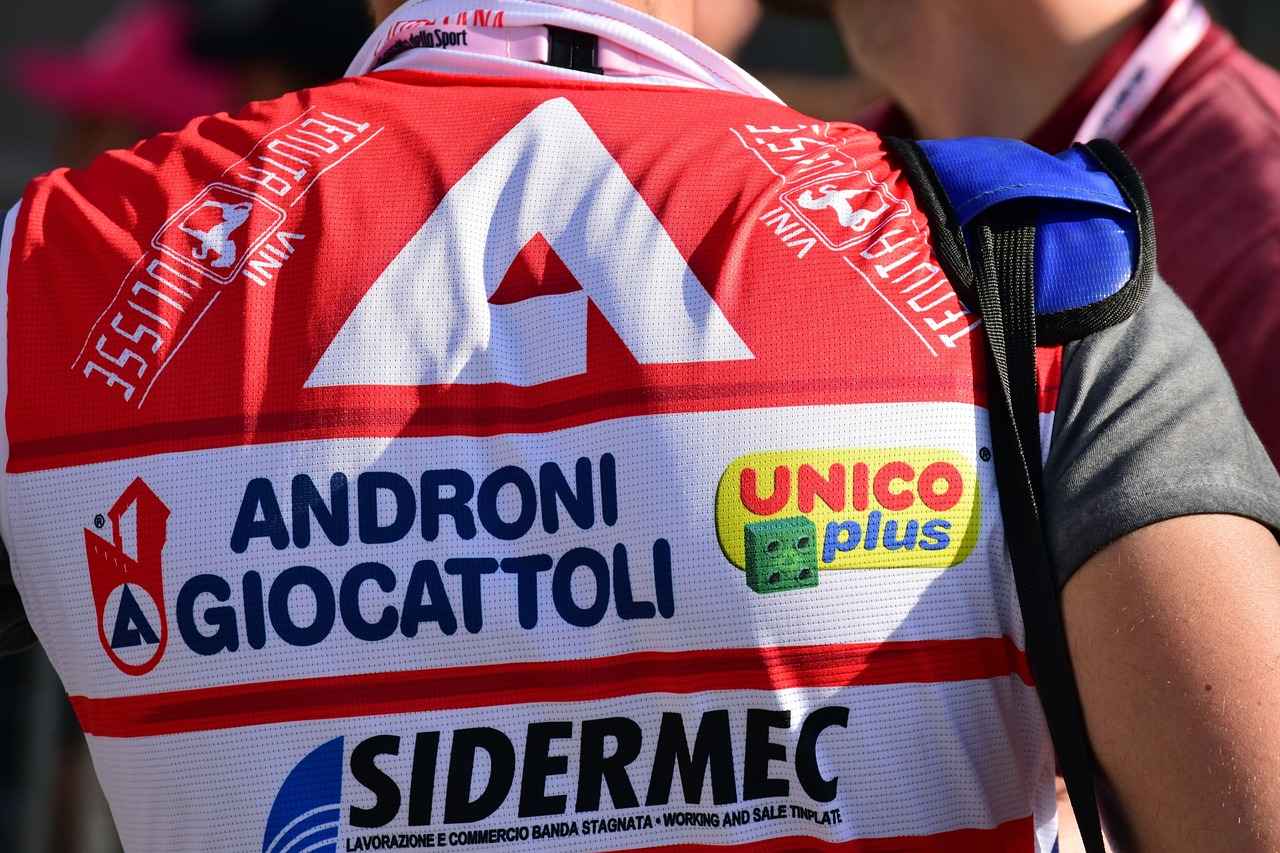
Designing Your Artwork for T-Shirts
Creating eye-catching designs is essential for attracting customers. In today’s competitive market, a well-designed t-shirt can make a significant difference in sales and brand recognition. Here are some valuable tips for designing artwork that translates well onto fabric and stands out:
- Know Your Audience: Understanding your target demographic is crucial. Consider their preferences in colors, styles, and themes to create designs that resonate with them.
- Color Theory: Utilize color theory to select a palette that not only looks appealing but also evokes the right emotions. Colors can significantly influence a buyer’s perception and feelings towards your design.
- Typography Matters: Choose fonts that complement your artwork. Ensure that the text is legible and fits the overall design. Play around with font sizes and styles to create a hierarchy that draws attention to key messages.
- Keep It Simple: Sometimes less is more. A cluttered design can be overwhelming. Aim for simplicity while ensuring your message is clear and impactful.
- Test Your Designs: Before finalizing, print samples of your designs on different fabrics. This will allow you to see how colors and details translate onto actual t-shirts.
- Consider Placement: The placement of your artwork on the t-shirt can dramatically alter its appeal. Experiment with different positions to find the most striking layout.
By following these tips, you can create stunning t-shirt designs that not only attract attention but also resonate with your audience, ensuring that your custom shirts stand out in a crowded marketplace.
Using Design Software for Custom T-Shirt Art
When it comes to creating stunning custom t-shirt designs, the right design software can make all the difference. With numerous options available, it’s essential to choose tools that not only enhance your creativity but also ensure professional-quality results. Here, we explore some of the most popular design software options that can help you bring your artistic vision to life.
- Adobe Illustrator: A leading vector graphics editor, Adobe Illustrator is widely used by professional designers. Its powerful tools allow for precise control over shapes and colors, making it ideal for creating intricate designs. The ability to work with layers and vector graphics ensures that your artwork remains sharp and scalable, perfect for t-shirt printing.
- Canva: For those who may not have extensive design experience, Canva offers a user-friendly interface with drag-and-drop functionality. It provides a vast library of templates, images, and fonts, allowing you to create eye-catching designs quickly. Canva is particularly useful for beginners and small businesses looking to produce custom t-shirts without a steep learning curve.
- CorelDRAW: Another robust vector graphic design software, CorelDRAW is favored by many for its versatility and ease of use. It offers a range of tools for creating detailed illustrations and layouts, making it suitable for both novice and experienced designers. CorelDRAW is particularly known for its excellent color management features, ensuring vibrant prints on fabric.
- Inkscape: As a free and open-source alternative, Inkscape is a powerful tool for creating vector graphics. It provides a wide range of features similar to Adobe Illustrator, making it accessible for those on a budget. Inkscape supports various file formats, allowing for smooth transitions between different design software.
In conclusion, selecting the right design software is crucial for producing high-quality custom t-shirt art. Whether you opt for professional tools like Adobe Illustrator or user-friendly platforms like Canva, each option has its unique features that cater to different skill levels and design needs. By leveraging these tools, you can create designs that not only stand out but also resonate with your target audience.
Tips for Creating Print-Ready Artwork
When embarking on the journey of creating custom t-shirts, one of the most critical steps is ensuring that your artwork is print-ready. This process involves understanding several key specifications that directly impact the quality of your final product. Below, we delve into the essential elements you need to consider for producing high-quality prints.
- Resolution: The resolution of your artwork is paramount. For print-ready designs, aim for a resolution of at least 300 DPI (dots per inch). This ensures that your images are sharp and clear, preventing any pixelation when printed.
- Color Modes: Color representation can vary significantly between digital screens and printed materials. Always use the CMYK color mode for your designs, as this mode is specifically tailored for print. Unlike RGB, which is used for screens, CMYK will give you a more accurate representation of how colors will appear on fabric.
- File Formats: The choice of file format can also affect print quality. The most commonly accepted formats for print-ready artwork include PDF, EPS, and TIFF. These formats preserve your design’s quality and are compatible with most printing services.
- Bleed and Margins: Adding a bleed area (typically 1/8 inch) around your design is essential to prevent any white edges from appearing after the shirt is cut. Additionally, ensure that important elements of your design are kept within safe margins to avoid being cut off.
- Fonts and Text: If your design includes text, convert all fonts to outlines or rasterize them. This prevents any issues with font compatibility during printing, ensuring that your text appears exactly as intended.
By adhering to these guidelines, you can create artwork that not only looks fantastic but also translates beautifully onto fabric. Taking the time to prepare your designs correctly will save you from potential headaches and ensure a successful printing process.
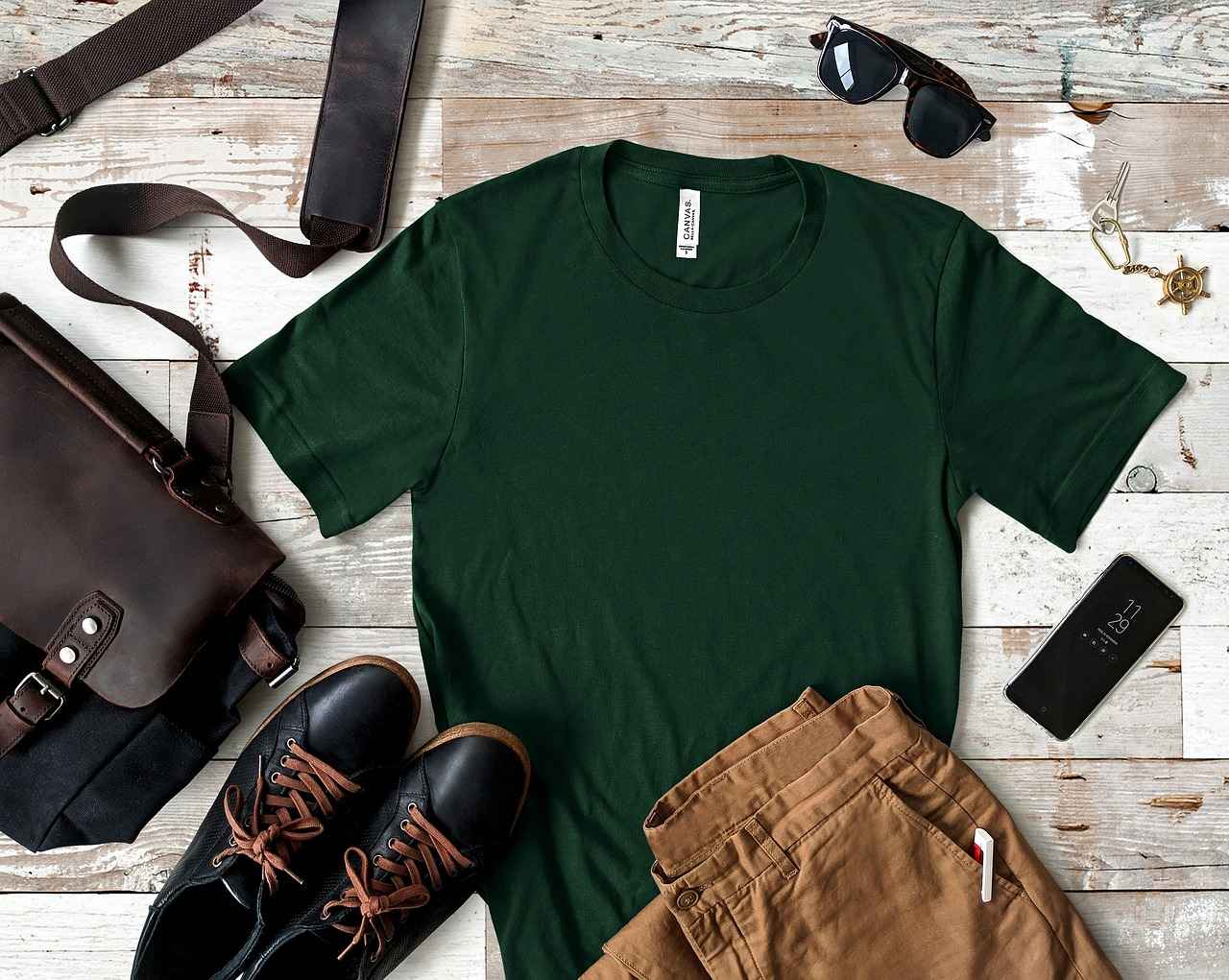
Choosing a Printing Method for Custom T-Shirts
When it comes to creating custom t-shirts, the printing method you select plays a pivotal role in determining the final product’s quality, durability, and overall cost. Understanding the various printing techniques available can help you make an informed decision that aligns with your artistic vision and budget. This section delves into three popular printing methods: screen printing, direct-to-garment (DTG), and heat transfer.
- Screen Printing: This traditional method is revered for its ability to produce vibrant colors and long-lasting prints. It involves creating a stencil (or screen) and using it to apply layers of ink onto the fabric. Pros include cost-effectiveness for bulk orders and durability, while cons involve higher setup costs and limited color options for complex designs.
- Direct-to-Garment (DTG) Printing: A modern technique that utilizes inkjet technology to print directly onto the fabric, DTG is ideal for intricate designs and small runs. The key advantages are its ability to handle full-color images and the lack of setup fees. However, DTG prints may not be as durable as screen-printed shirts and can be more expensive for larger quantities.
- Heat Transfer: This method involves printing a design onto a special transfer paper and then applying heat to transfer the design onto the t-shirt. It’s great for detailed graphics and smaller runs. While it offers flexibility and ease of use, heat transfers can crack or fade over time, especially with frequent washing.
In summary, the choice of printing method can significantly impact your custom t-shirt project. Consider your design’s complexity, the quantity needed, and your budget when selecting the most suitable technique. Each method has its unique strengths and weaknesses, making it essential to choose one that aligns with your specific needs.
Screen Printing: Pros and Cons
Screen printing is a popular printing technique that has been around for decades. It is renowned for its durability and vibrant colors, making it an ideal choice for bulk orders. However, like any method, it has its advantages and disadvantages. This article delves into the pros and cons of screen printing, providing a comprehensive overview for those considering this technique for their custom t-shirt needs.
| Advantages | Disadvantages |
|---|---|
| Durability: Screen prints are known for their longevity. The ink used is thick and adheres well to the fabric, making it resistant to fading and wear. | Setup Costs: The initial setup for screen printing can be expensive. This includes the cost of screens, inks, and equipment, which can be a barrier for small orders. |
| Vibrant Colors: Screen printing allows for rich and vibrant color application, making designs pop and stand out. | Limited Colors: Each color in a design requires a separate screen, which can limit the number of colors used in a single print without increasing costs. |
| Bulk Orders: Screen printing is highly efficient for large quantities, making it cost-effective for bulk orders. | Less Detail: Fine details and gradients can be challenging to achieve compared to other methods like direct-to-garment (DTG) printing. |
In conclusion, screen printing is an excellent choice for those looking for durable and vibrant designs, particularly for bulk orders. However, it is essential to consider the setup costs and limitations in color and detail. Understanding these factors can help you make an informed decision about whether screen printing is the right choice for your custom t-shirt project.
Direct-to-Garment (DTG) Printing Explained
Direct-to-Garment (DTG) printing is a revolutionary technique in the world of custom t-shirt production, offering a unique approach to fabric printing. This method allows for intricate designs and full-color prints, making it an excellent choice for artists and businesses looking to create small runs and custom orders. Unlike traditional printing methods, DTG printing uses specialized inkjet technology to apply designs directly onto the fabric, providing a level of detail and color vibrancy that is hard to achieve with other techniques.
One of the standout features of DTG printing is its ability to handle complex images, including photographic prints and multicolored designs. This capability makes it particularly appealing for artists who want to showcase their artwork on apparel. Furthermore, the process is highly efficient for small batch orders, allowing businesses to produce custom designs without the need for large inventory commitments.
Another significant advantage of DTG printing is its environmental impact. The inks used in this process are often water-based, which reduces harmful emissions compared to other printing methods. Additionally, DTG printing minimizes waste, as it eliminates the need for screens and setup that are typical in screen printing.
However, it is essential to consider some limitations of DTG printing. The process can be slower than traditional methods, making it less suitable for large-scale production runs. Additionally, the quality of the fabric can affect the final print; therefore, selecting the right material is crucial for achieving the best results.
In conclusion, Direct-to-Garment printing is an innovative solution for custom t-shirt production, particularly for those seeking high-quality, detailed prints. By understanding the benefits and limitations of this technique, artists and businesses can make informed decisions that align with their creative vision and operational needs.
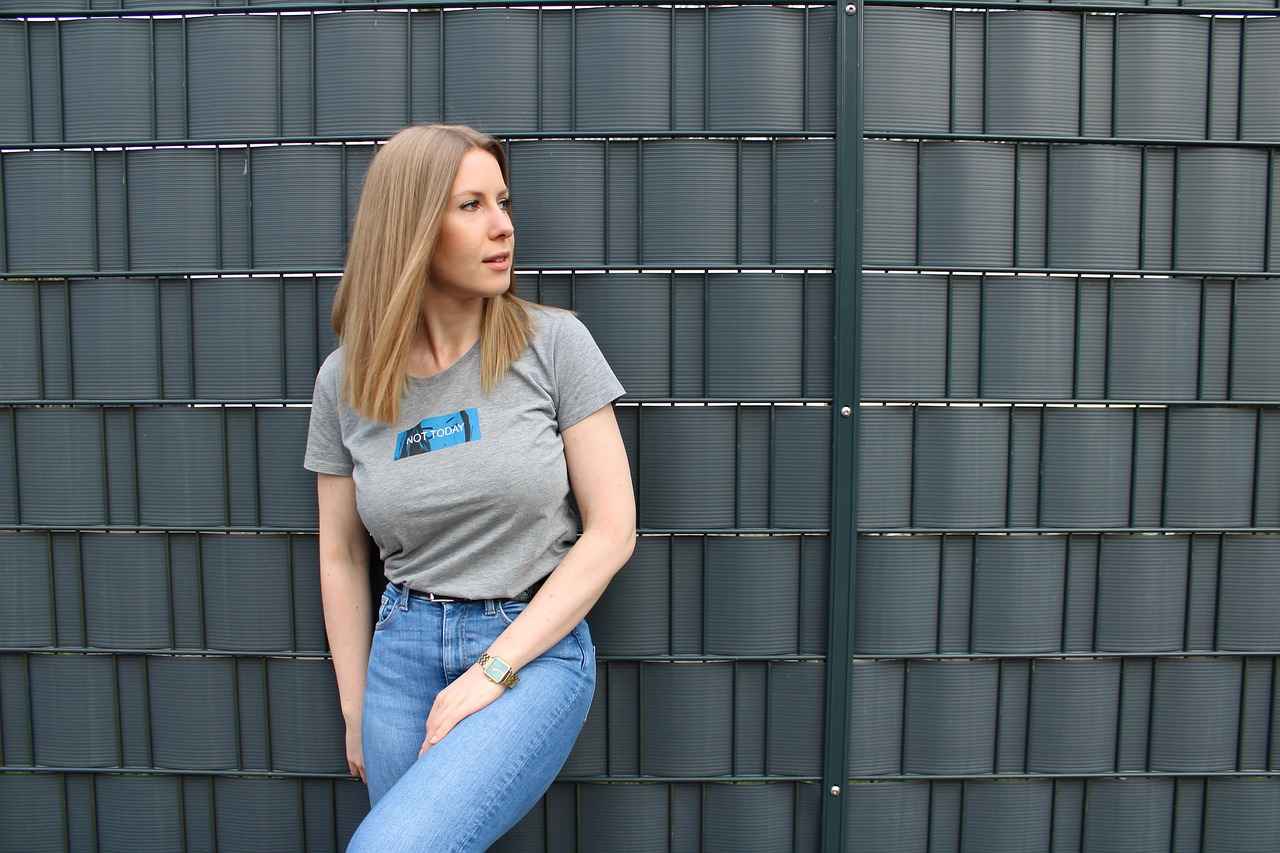
Marketing Your Custom T-Shirts Effectively
Once your t-shirts are ready, effective marketing is key to attracting customers and ensuring your designs reach the right audience. In an increasingly competitive market, employing a variety of strategies can significantly enhance your visibility and sales. Here are some effective methods to promote your custom t-shirts:
- Utilizing Social Media Platforms: Social media is a powerful tool for promoting your custom t-shirts. Platforms like Instagram and Facebook allow you to showcase your designs through engaging visuals. Create captivating posts that highlight your t-shirts, share behind-the-scenes content, and interact with your audience through stories and live sessions.
- Setting Up an Online Store: Establishing an online store is crucial for reaching a wider audience. Consider using platforms like Shopify or Etsy, which offer user-friendly interfaces and built-in marketing tools. Ensure your store is visually appealing and easy to navigate to enhance the shopping experience.
- Participating in Local Events: Attend local fairs, markets, or pop-up shops to showcase your t-shirts. These events provide an excellent opportunity to connect with potential customers face-to-face, receive immediate feedback, and create brand awareness within your community.
- Collaborating with Influencers: Partnering with social media influencers who resonate with your target market can significantly boost your brand’s visibility. Influencers can showcase your designs to their followers, providing authentic exposure and potentially driving sales.
- Creating Engaging Content: Invest time in creating valuable content related to your t-shirts. This could include blog posts about the design process, styling tips, or the inspiration behind your artwork. Such content not only attracts visitors but also establishes your brand as an authority in the custom apparel space.
By implementing these strategies, you can effectively promote your custom t-shirts and attract a dedicated customer base. Remember, the key is to be consistent in your marketing efforts and to continually engage with your audience to build lasting relationships.
Utilizing Social Media for Promotion
In today’s digital age, leveraging social media platforms such as Instagram and Facebook is essential for showcasing your custom t-shirts. These platforms not only provide a visual medium to display your designs but also serve as powerful tools for engaging with potential customers and building a loyal community around your brand.
Showcasing Your Custom T-Shirts
Instagram, with its focus on imagery, is particularly effective for showcasing your custom t-shirts. High-quality photos of your designs can capture attention and encourage shares. Utilize Instagram Stories and Reels to demonstrate your t-shirts in action, perhaps by featuring customers wearing your designs or behind-the-scenes clips of the design process.
Engaging with Your Audience
Engagement is key to building a following. Respond to comments, ask for feedback, and create polls to involve your audience in the design process. This not only fosters a sense of community but also gives you valuable insights into what your customers want.
Building a Brand Identity
Use consistent branding across your social media profiles to enhance recognition. This includes using the same logo, color scheme, and tone of voice. Share stories about your brand’s journey, values, and mission to connect with your audience on a deeper level.
Utilizing Hashtags for Reach
Incorporate relevant hashtags to increase the visibility of your posts. Research trending hashtags in the custom apparel niche and combine them with unique tags that represent your brand. This strategy can help attract potential customers who are searching for custom t-shirts.
Collaborating with Influencers
Consider partnering with influencers who align with your brand values. Collaborations can introduce your custom t-shirts to a broader audience and lend credibility to your brand.
Conclusion
In conclusion, effectively utilizing social media platforms like Instagram and Facebook can significantly enhance the visibility and appeal of your custom t-shirts. By engaging with your audience, showcasing your designs creatively, and building a strong brand identity, you can cultivate a dedicated following and drive sales.
Setting Up an Online Store
Creating an online store is a crucial step for artists and designers looking to sell their custom t-shirts directly to consumers. With the rise of e-commerce, platforms like Shopify and Etsy have become popular choices for entrepreneurs in the fashion industry. Here’s a detailed look at how to effectively set up your online store.
Choosing the Right E-Commerce Platform
- Shopify: Known for its user-friendly interface, Shopify offers a wide range of customizable templates. It provides various payment options and integrates seamlessly with social media platforms, making it ideal for marketing your custom t-shirts.
- Etsy: If your designs have a handmade or artistic flair, Etsy is a great platform. It caters to a niche audience looking for unique items, and it allows you to connect with customers who appreciate craftsmanship.
Setting Up Your Store
- Sign Up: Create an account on your chosen platform. Both Shopify and Etsy offer easy sign-up processes.
- Design Your Store: Customize your store’s layout and design to reflect your brand. Use high-quality images of your t-shirts and engaging descriptions to attract potential buyers.
- Add Products: Upload your custom t-shirt designs, ensuring to include detailed descriptions, pricing, and size options.
Marketing Your Online Store
Once your store is set up, it’s essential to implement effective marketing strategies. Utilize social media platforms to showcase your designs, engage with your audience, and drive traffic to your online store. Consider running promotions or collaborating with influencers to reach a broader audience.
In conclusion, setting up an online store on platforms like Shopify and Etsy provides a fantastic opportunity to sell your custom t-shirts directly to consumers. By choosing the right platform, designing an appealing store, and employing effective marketing strategies, you can successfully launch your custom t-shirt business.
Frequently Asked Questions
- What materials are best for custom t-shirts?
When it comes to custom t-shirts, cotton and polyester are the most popular choices. Cotton is soft and breathable, making it great for comfort, while polyester is durable and moisture-wicking, perfect for athletic wear. The choice depends on your design needs and the intended use of the shirt.
- How do I create print-ready artwork?
Creating print-ready artwork involves ensuring your designs have the right resolution (at least 300 DPI), are in the correct color mode (usually CMYK), and saved in suitable file formats like PNG or PDF. This ensures your designs look sharp and vibrant when printed.
- What printing methods should I consider?
There are several printing methods to choose from, including screen printing, which is great for bulk orders and offers vibrant colors, and direct-to-garment (DTG) printing, which allows for detailed, full-color designs, ideal for smaller runs. Your choice will affect both the quality and cost of your shirts.
- How can I effectively market my custom t-shirts?
Marketing your custom t-shirts can be done through social media platforms like Instagram and Facebook, where you can showcase your designs and engage with potential customers. Additionally, setting up an online store on platforms like Shopify or Etsy can help you reach a wider audience.
